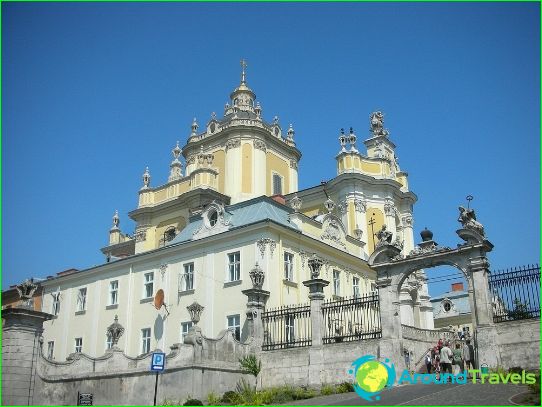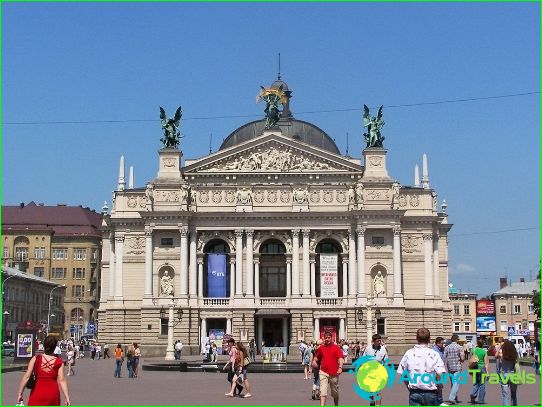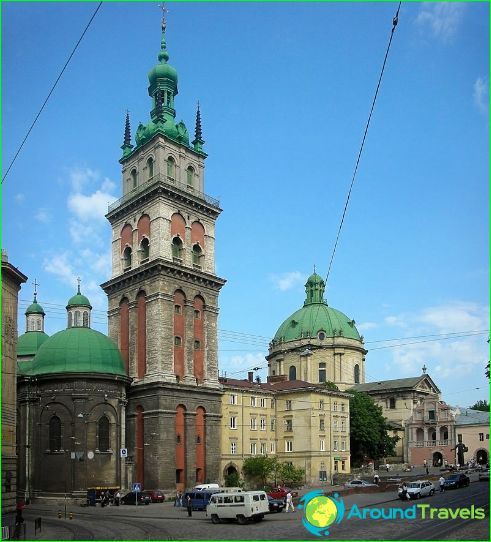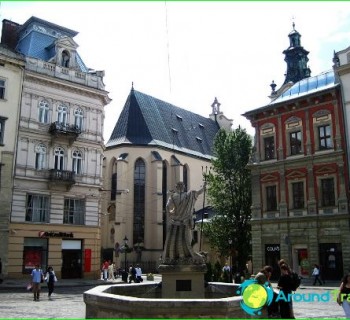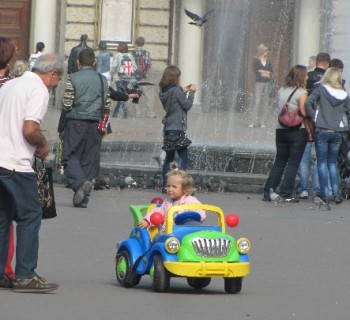History of Lviv
Lviv is a large cultural and scientific center of Ukraine, as well as one of the most beautiful and interesting cities in Europe.
At the end of the 12th century, the lands of modern Lviv and its environs were part of the Galicia-Volyn principality. The very first written mentions of the city are contained in the Galicia-Volyn Chronicle and date back to 1256. It is from this time that the official chronology of Lviv has been carried out..
Founding of Lviv
It is believed that Lviv was founded by Daniil Galitsky (prince of Galitsky and Volynsky, the Grand Duke of Kiev and the first king of Russia), who appreciated the natural landscapes of these places, ideal for creating a new well-fortified settlement. In his famous chronicle "Triple Lviv" (Latin Leopolis triplex), the poet, historian and burgomaster of Lvov, Bartolomei Zimorovich, who devoted an impressive part of his life to studying the history of his beloved city, writes: “Seeing a militarily advantageous mountain protected from below , as if a ring of valleys covered with forest and the steepest that could hold back the enemy, he immediately ordered to build a fortress here and decided to move his princely residence here. " The city got its name in honor of the son of Daniil Galitsky - Lev Daniilovich. In 1272 Lviv became the capital of the Galicia-Volyn principality.
Middle Ages
In 1349, weakened by civil strife and frequent attacks by the Mongol-Tatars, Lviv was under the control of Poland, and already in 1356 the Polish king Casimir III the Great granted the city the Magdeburg Law. Lviv begins to grow and develop rapidly, which is greatly facilitated by its extremely successful location at the intersection of important trade routes. Finally, the status of one of the largest shopping centers in Eastern Europe was secured for Lviv by the receipt in 1379 by the city of the right to have its own warehouses. As a powerful outpost of Poland in the southeast, prosperous Lviv attracted more and more new settlers, soon becoming a multinational city, whose inhabitants professed a variety of religions. Economic growth has also contributed to the development of the city as a cultural and scientific center..
By the end of the 15th century, the intensifying Turkish expansion to the West had virtually blocked all trade routes, thereby severely damaging Lviv's economy. The city was in poverty, going through, perhaps, one of the most difficult periods in its history. The last straw was a terrible fire in 1527, which almost completely destroyed the Gothic Lviv. Nevertheless, the inhabitants did not abandon the city, having managed not only to rebuild it (albeit in the Renaissance style), but also to revive its former merchant glory. Previously, the well-being of local merchants was mainly based on the trade in goods in transit through Lviv, but now the emphasis was on local goods - fish, wax, furs, etc. Soon foreign goods began to flow like a river. Life on the Lviv Market was in full swing again. Crafts also actively developed during this period in Lviv.
New time
It is not surprising that the prosperous Lviv, known as a major trade and craft center far beyond its borders, was of particular interest to various conquerors. In the 17th century, the city survived many sieges (Cossacks, Swedes, Turks, Tatars, etc.), but in spite of everything it survived. And yet, already in 1704, the thoroughly weakened Lviv was captured for the first time in almost 400 years by the army of the Swedish king Charles XII and plundered. Of course, this could not but affect the well-being of the city, and Lviv gradually fell into decay. The general crisis that reigned in the possessions of the Polish-Lithuanian Commonwealth also did not contribute to the revival of the city..
Lviv was under the complete control of Poland until 1772 (except for a short period in 1370-1387, when the city was ruled by Hungarian governors). In 1772, after the first partition of the Commonwealth, Lviv became part of the Austrian Empire (since 1867, the Austro-Hungarian Empire), becoming the capital of one of its provinces - the Kingdom of Galicia and Lodomeria. During the reign of the Austrians, a number of administrative and economic reforms were carried out, the old city walls were demolished, which made it possible to significantly expand its borders, telephone communications were established, a railway was built, streets were electrified and much more. The cultural life of the city also underwent significant changes - two theaters were built, the Lviv University was restored, the Real (Trade) School, the Technical Academy and the Ossolinsky private library (today the V. Stefanyk Lviv Scientific Library) were opened.
elk publishing business ...
The twentieth century
After the collapse of the Austro-Hungarian Empire in 1918, Lviv for some time became part of the West Ukrainian People's Republic, which entailed an armed military conflict, which went down in history as the Polish-Ukrainian War, against the background of which the so-called Soviet-Polish War, or Polish front. As a result of the signing of the Riga Peace Treaty, Lviv again fell into the power of Poland, under whose control it remained until 1939 as the capital of the Lviv Voivodeship..
On September 1, the Second World War began with the invasion of Poland. In accordance with the secret additional protocol to the Non-Aggression Pact between Germany and the USSR (Molotov-Ribbentrop Pact), Lviv was included in the sphere of interests of the latter. However, on September 12, 1939, the Wehrmacht began a siege of the city. After a small conflict, the issue was settled and the German troops withdrew from the city. On September 21, the Soviet command began negotiations with the Poles, which resulted in the reunification of the Western Ukrainian lands with the Ukrainian Soviet Socialist Republic within the USSR. The reunification was followed by massive repression and deportation of Ukrainians and Poles to Siberia..
In 1941, during the offensive of the German army, Soviet troops left Lvov, but before the retreat, the NKVD organs without trial or investigation shot more than 2,500 Ukrainians, Poles and Jews in Lviv prisons (most of the prisoners were representatives of the local intelligentsia). The saddest pages in the history of the German occupation of the city in 1941-1944. were "Murder of Lviv Professors", "Holocaust in Lviv" and "Lviv Ghetto". Lviv was liberated by Soviet troops in July 1944 and became the administrative center of the Lviv region within the Ukrainian SSR, as well as an important center for the revival of the Ukrainian nation..
In 1991, after the collapse of the USSR, Lviv remains the administrative center of the Lviv region, but already as part of an independent Ukraine.


